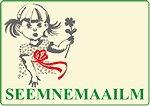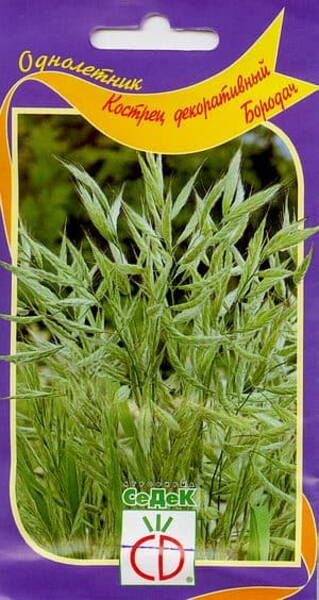Your shopping cart is empty!
Large-headed brome "Borodach" (lanceolate brome)
Mediterranean brome "Bearded Man" (Large-headed brome, lanceolate brome) - Bromus macrostachys.
One of the favorite plants of florists. It has a drooping panicle of large spikelets with a slight droop. Unpretentious in care, light-loving, cold-resistant, quite drought-resistant, grows especially well on fertile soils.
Ideal for decorative design of rocky hills, in mixborders it is planted in groups. It is used by florists for compositions of both dried flowers and in bouquets with freshly cut flowers. It is sown in nests of 4-5 pieces with subsequent thinning.
Seed germination temperature +20 °C
Seed planting: IX, IV-V.
Flowering: VI-VII.
Planting pattern: 15x20 cm.
Plant height: 70 cm.
Name: "Bromus" - the ancient Greek name for oats.
The genus includes about 30 species (some of them grow in fields, on roadsides as weeds).
The most commonly grown ornamental plant is the quaking brome (Bromus briziformis). The domestication of other species is fast, and ornamental species of this genus are constantly appearing in seed catalogs. For example, the large-spike brome (Bromus macrostachys).
Location: the plants are undemanding, cold-resistant, light-loving and quite drought-resistant.
Reproduction: by seeds, sowing them directly into the soil in May. About 4 g of seeds are needed for 100 plants (they are sold unpeeled from the spikelets).
It is better to sow in nests at a distance of 10-15 cm. The seedlings in the nests should be thinned out. In order for the plants to be strong and bloom for a long time, they must be watered in hot, dry summers when the soil dries out. By autumn, the trimmed bushes grow back and produce a secondary, but weaker bloom.
Use: Brome are mainly used for dry bouquets, but they are very decorative with fresh flowers too. Light panicles of bromes will decorate a rocky hill and mixborder. For drying, panicles are cut at different stages of flowering. They are dried in bunches, scattered and in vases.
One of the favorite plants of florists. It has a drooping panicle of large spikelets with a slight droop. Unpretentious in care, light-loving, cold-resistant, quite drought-resistant, grows especially well on fertile soils.
Ideal for decorative design of rocky hills, in mixborders it is planted in groups. It is used by florists for compositions of both dried flowers and in bouquets with freshly cut flowers. It is sown in nests of 4-5 pieces with subsequent thinning.
Seed germination temperature +20 °C
Seed planting: IX, IV-V.
Flowering: VI-VII.
Planting pattern: 15x20 cm.
Plant height: 70 cm.
Name: "Bromus" - the ancient Greek name for oats.
The genus includes about 30 species (some of them grow in fields, on roadsides as weeds).
The most commonly grown ornamental plant is the quaking brome (Bromus briziformis). The domestication of other species is fast, and ornamental species of this genus are constantly appearing in seed catalogs. For example, the large-spike brome (Bromus macrostachys).
Location: the plants are undemanding, cold-resistant, light-loving and quite drought-resistant.
Reproduction: by seeds, sowing them directly into the soil in May. About 4 g of seeds are needed for 100 plants (they are sold unpeeled from the spikelets).
It is better to sow in nests at a distance of 10-15 cm. The seedlings in the nests should be thinned out. In order for the plants to be strong and bloom for a long time, they must be watered in hot, dry summers when the soil dries out. By autumn, the trimmed bushes grow back and produce a secondary, but weaker bloom.
Use: Brome are mainly used for dry bouquets, but they are very decorative with fresh flowers too. Light panicles of bromes will decorate a rocky hill and mixborder. For drying, panicles are cut at different stages of flowering. They are dried in bunches, scattered and in vases.
Bot. syn. Bromus lanceolatus.













